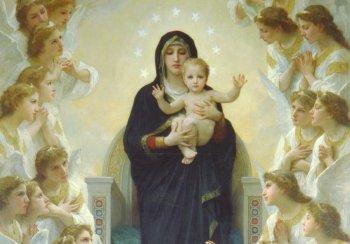
The French realist painter William-Adolphe Bouguereau (1825-1905) was known in his time as a master of legendary artistic achievement. Yet with the rise of the Modernist movement, his accomplishments were denigrated, and denounced, and his name banished from art history. Only in the last few decades, after the collapse of the Modernist movement, has Bouguereau reappeared on the field of our historical consciousness albeit on the sidelines. With Modernist assumptions a thing of the past, Bouguereau has gained more acknowledgment today, yet very likely, there are still more opportunities to learn from this once legendary artist.
When one first looks at a painting by Bouguereau, one immediately sees a stunning realism, described by some as photo-realistic (photography certainly had an influence on artists in his time); one also sees flawless technique, a lifetime of obsessive preoccupation with perfecting the smallest details, without regard for leaving any visible mark of the artist’s hand. In his work one also sees an idealized world filled with youthfulness, sentimentality (sometimes sensual), goodness, divinity, and beauty. Looking at a Bouguereau painting, one can see all of the reasons why his work was once banned from art history, and nonetheless see its timeless qualities.
Perhaps from his work, one can grasp how it is that a lifetime of artwork can be so thoroughly trampled on and destroyed, and then come back to life. Perhaps there is some importance in his work to be discovered.
Bouguereau’s career was one of constant success in terms of his social, financial, and artistic achievements; yet at the same time his life endured a series of continuous tragedies that took their toll on the artist’s health and his spirit, leading to his eventual death. Perhaps it is true what they say: without loss, one cannot gain.
On Nov. 30, 1825, William was born the son of Theodore Bouguereau, an unprosperous seller of wine and olive oil, in La Rochelle France. Relations were strained in the Bouguereau family due to business problems, and Bouguereau was eventually sent to live with his uncle Eugene in Mortagne. This turned out to be a blessing for young William, since his uncle, unlike his father, encouraged him to embrace culture and art. Bouguereau received his first art classes during his stay in Mortagne.
After moving to Bordeaux with his family to help in the family business, Bouguereau eventually persuaded his father to let him attend The School of the Beaux Arts in Paris after having won first prize in a local painting competition. With his uncle’s help, William obtained a commission which would help fund his studies.





